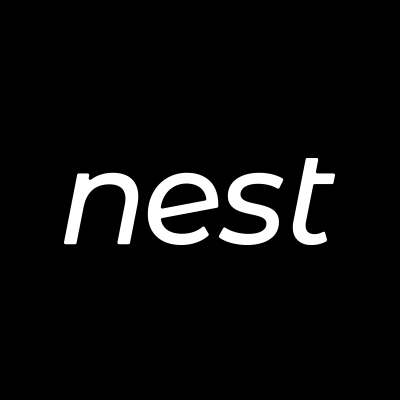Written by: Sharlyn Wu, Chief Investment Officer, Huobi Group
With Uniswap’s daily trading volume reaching nearly $1 billion, the automated market maker (AMM) mechanism has also become the backbone of decentralized exchanges. The reason is simple. Considering the existing underlying technology and blockchain cost structure, it is no longer appropriate for market makers to quickly place and cancel orders in an order book-based exchange like before.
A platform like Uniswap that uses a constant coefficient AMM algorithm is very suitable for long-tail assets. These assets require less support in terms of pricing and liquidity, and the projects themselves usually need to provide liquidity for retail investors. However, as I stated in my previous postWhy is Uniswap V2 not suitable for use as an oracle machine? As mentioned in , Uniswap is not a universal solution suitable for all scenarios, nor can it be an oracle machine suitable for the DeFi field.
In addition to Uniswap, there are also some other platforms trying to optimize the experience of market makers and traders, including Curve, which focuses on stablecoins, and Balancer, which supports multiple asset pools. Unfortunately, none of them can be a general model for all market maker application scenarios. This is because the first principle of financial product design is that transactions need to be priced at market prices. Otherwise, the product may be continuously arbitraged by speculators. Without proper risk management measures in place, there will be no rational market participants to participate.
Real market makers are likely to be unwilling to go to Uniswap to make markets, because they may lose money in the event of market turmoil. For some assets with high liquidity, this problem is even more obvious. Because the gap between the price of these assets on Uniswap and the market price may be the norm. Really big investors will not choose Uniswap, after all, any large-scale transaction may lead to extremely high slippage.
The new market-making protocol CoFiX will redefine the rules of the AMM game. The CoFiX protocol introduces a market maker model based on market prices and adopts a fully computable risk control mechanism. The NEST oracle chosen by CoFiX provides a set of mathematical proofs for pricing risk. With NEST, CoFiX designed a fully computable on-chain market maker protocol to solve the systemic risk of market makers on DEX.
The main operating rules of CoFiX are:
1. The CoFiX protocol obtains the market price P from the NEST oracle machine
2. CoFiX calculates the risk coefficient K into the market price P. Delay and price fluctuation are the two main price risk factors
3. With K, CoFiX will generate a new reference price P, and P is the real reference price for traders and market makers
Compared with other existing AMM protocols, the advantages of CoFiX are obvious. It uses the actual market price to rule out the possibility of systematic arbitrage, and at the same time fully quantifies the risk, so that automation, the characteristic of the DeFi market, is also preserved.
One of the biggest flaws of existing AMM protocols is that market makers cannot fully determine how much risk they are taking when providing liquidity. Furthermore, since these agreements do not use actual market prices, market makers cannot accurately hedge their positions held on other platforms. Because these AMM mechanisms fundamentally rely on arbitrageurs to approach the market price infinitely, market makers can only continue to subsidize arbitrageurs.
By directly adopting market prices, CoFiX gives market makers the opportunity to assess risks and take corresponding hedging measures. The protocol also provides other special risk control mechanisms to solve problems such as network congestion and oracle attacks. CoFiX has revolutionized the AMM game, enabling DeFi to truly appeal to all traders, all market makers, and all assets.
We trust banks like Goldman Sachs because of their ability to continue as a going concern. But while giving them this kind of trust, we also lost effective monitoring of Goldman Sachs operations, and then assumed the hidden risk of default. Right now, finance is shifting from off-chain to on-chain, and the information asymmetry between Goldman Sachs and us has also been broken. We can now monitor all asset information just like the banker on the chain.
In addition to information symmetry, DeFi also brings full computability. In the traditional financial system, we can never predict when Lehman Brothers will collapse, or when a P2P lending company will take away users money and run away. Even the geniuses at LTCM, who can create sound financial models, cannot accurately calculate the probability of a Russian debt default.
Because of DeFi, for the first time in history, we can create a financial system that can operate automatically without human intervention, and accurately calculate the risk-reward structure behind all assets and transactions, which has completely changed the financial game.
However, only a complete protocol can make a lot of money in the DeFi field. When financial institutions need to invest millions or even billions of dollars in DeFi transactions or lending agreements, they will not be willing to take the pricing risk from one person or a small group of people. They are not going to put money into DeFi protocols without proper risk management.
Although projects such as Uniswap have laid a solid foundation for DeFi and attracted more than 100,000 users, to make DeFi officially enter Wall Street from the casino, we need to give full play to the mathematical determination in the era of decentralized finance. These characteristics of sex and computability.
Therefore, we see that DeFi is gradually evolving into CoFi (Computable Finance), and computable finance that can quantify and calculate each financial parameter. In other words, only reasonable on-chain pricing, professional financial products, and solid risk management can lay a good foundation for DeFi 2.0. CoFiX has taken an important step in the right general direction.










